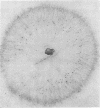Abstract
Media are described for the isolaton of Fusarium graminearum in the perithecial state, Gibberella zeae, and for the production of F-2 (zearalenone) by Fusarium species. On soil extract-corn meal agar isolated medium, G. Zeae produced perithecia in 9 to 14 days under a 12-h photoperiod. Species of Fusarium were screened for F-2 production on a liquid medium. From strains that produced F-2, the yields, from stationary cultures of G. zeae and F. culmorum after 12 days of incubation, ranged from 22 to 86 mg/liter. Three strains produced no F-2. Glumatic acid, starch, yeast extract,and the proper ratio of medium volume-to-flask volume were necessary for F-2 synthesis.
Full text
PDF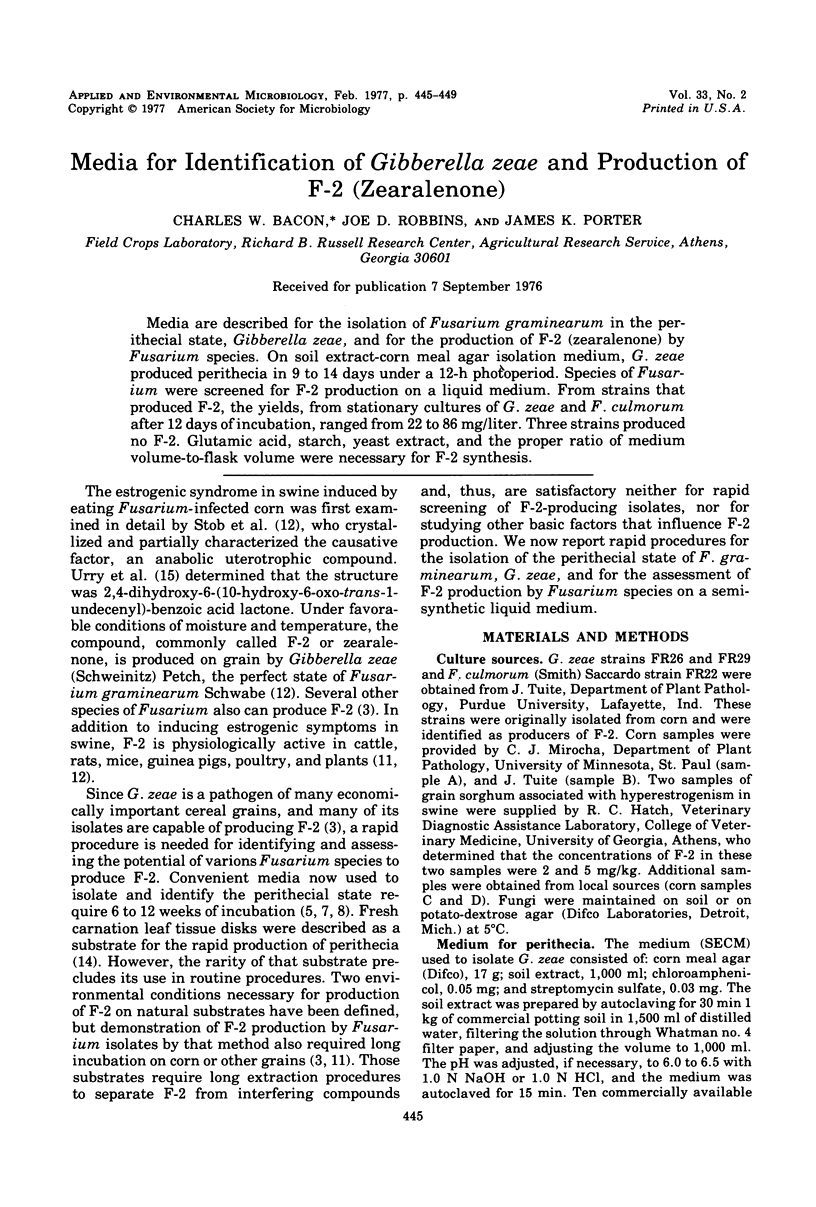
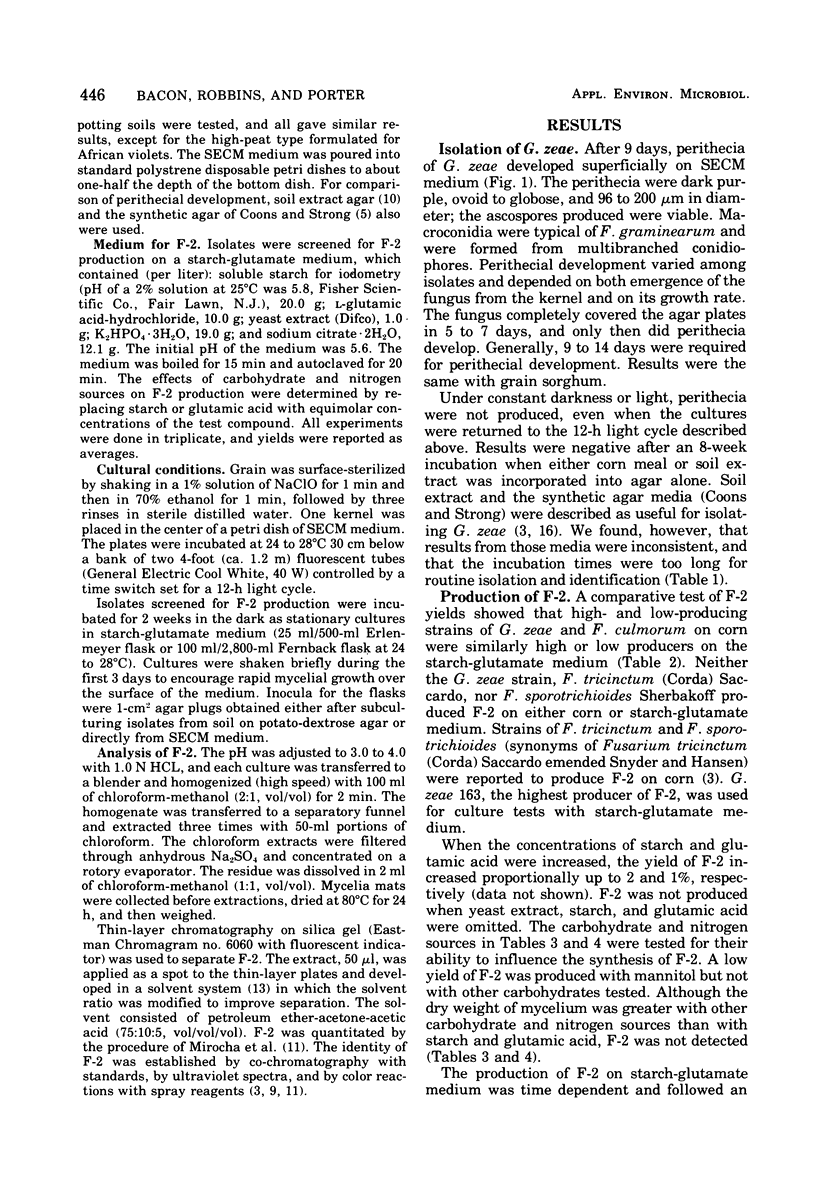
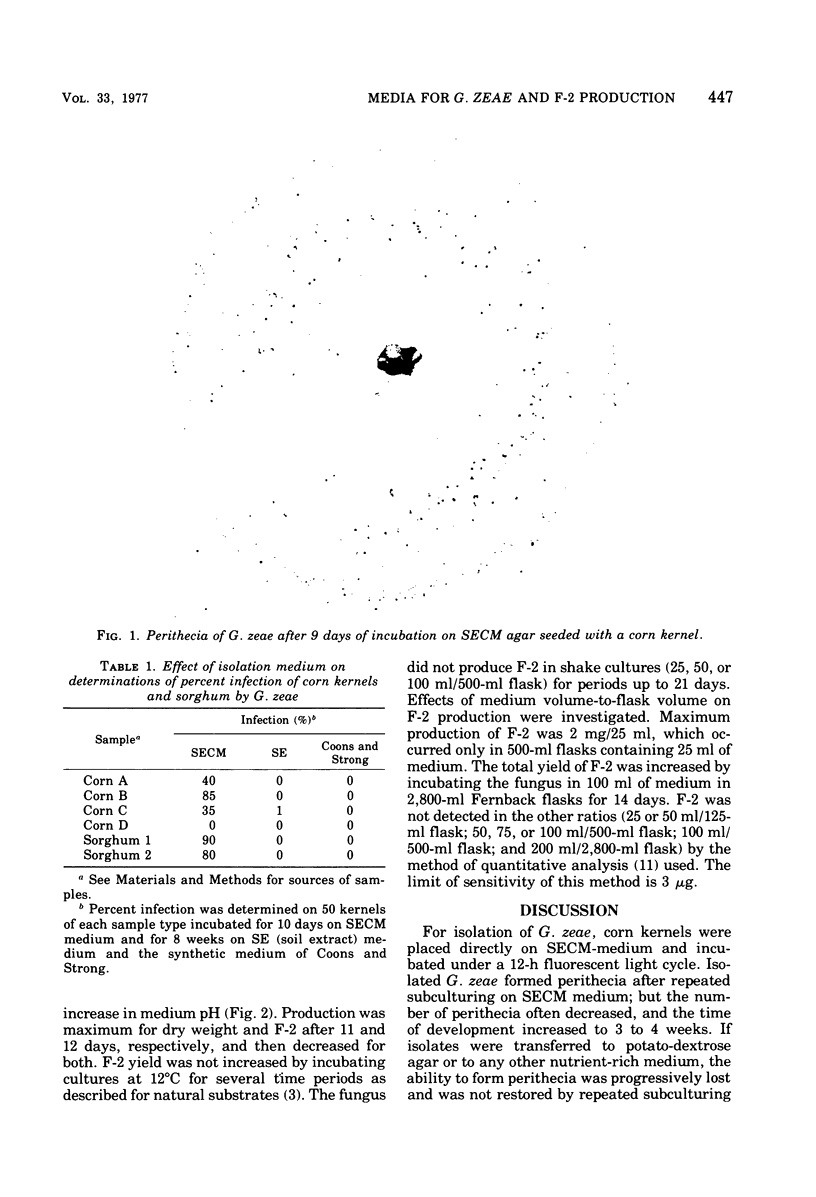
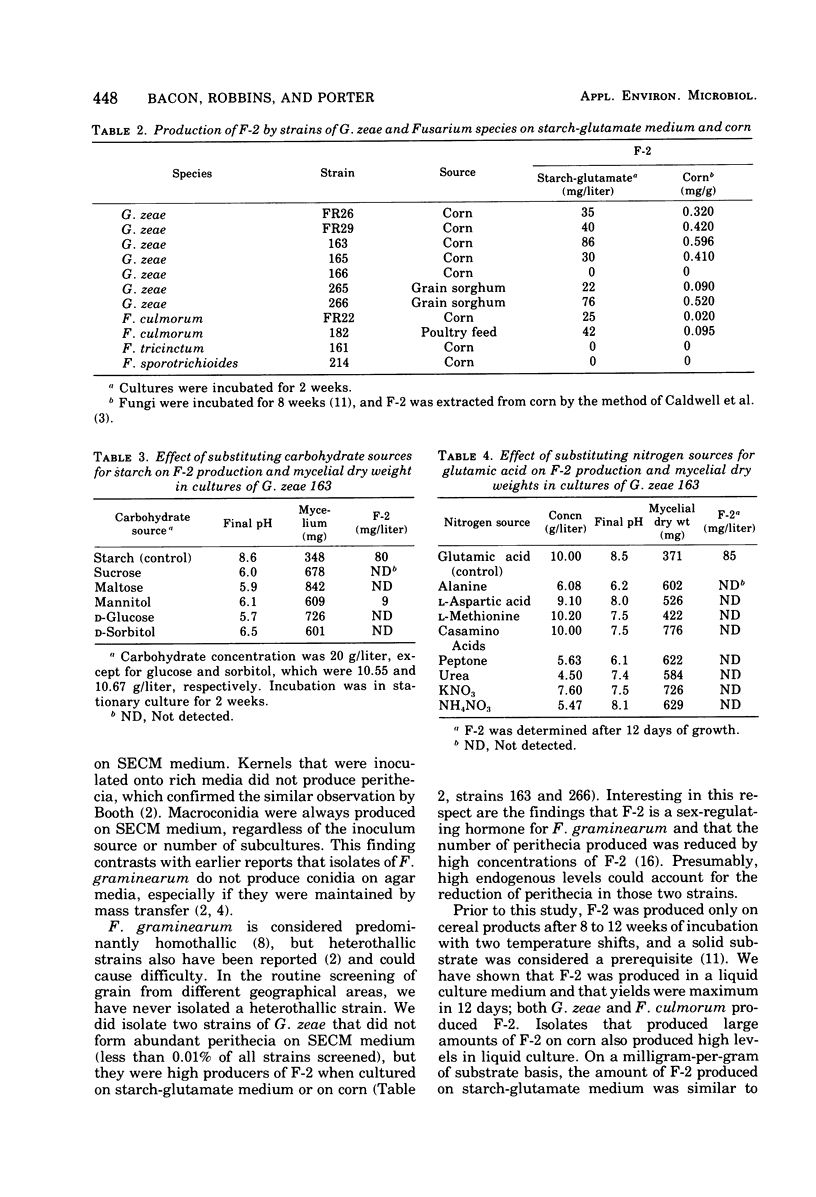
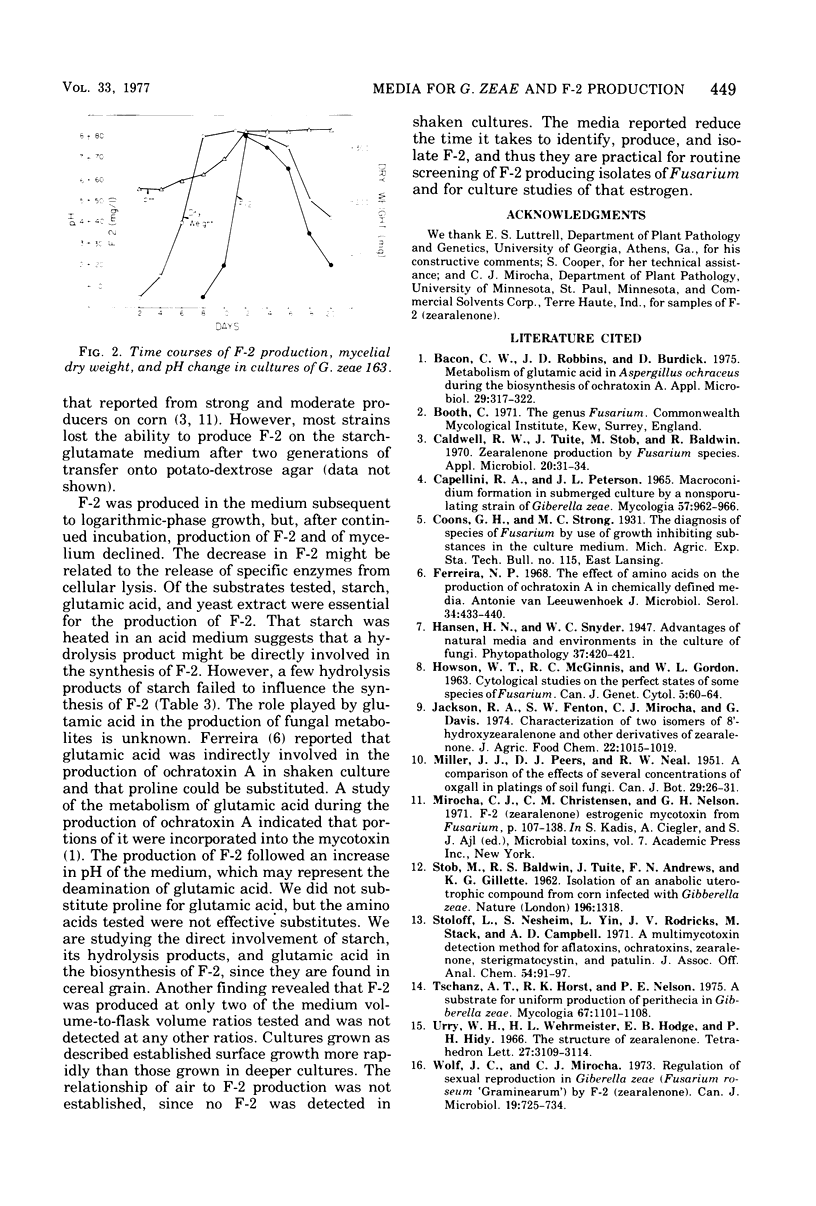
Images in this article
Selected References
These references are in PubMed. This may not be the complete list of references from this article.
- Bacon C. W., Robbins J. D., Burdick D. Metabolism of glutamic acid in Aspergillus ochraceus during the biosynthesis of ochratoxin A. Appl Microbiol. 1975 Mar;29(3):317–322. doi: 10.1128/am.29.3.317-322.1975. [DOI] [PMC free article] [PubMed] [Google Scholar]
- Caldwell R. W., Tuite J., Stob M., Baldwin R. Zearalenone production by Fusarium species. Appl Microbiol. 1970 Jul;20(1):31–34. doi: 10.1128/am.20.1.31-34.1970. [DOI] [PMC free article] [PubMed] [Google Scholar]
- Ferreira N. P. The effect of amino acids on the production of ochratoxin A in chemically defined media. Antonie Van Leeuwenhoek. 1968;34(4):433–440. doi: 10.1007/BF02046465. [DOI] [PubMed] [Google Scholar]
- Jackson R. A., Fenton S. W., Mirocha C. J., Davis G. Characterization of two isomers of 8'-hydroxyzearalenone and other derivatives of zearalenone. J Agric Food Chem. 1974 Nov-Dec;22(6):1015–1019. doi: 10.1021/jf60196a039. [DOI] [PubMed] [Google Scholar]
- STOB M., BALDWIN R. S., TUITE J., ANDREWS F. N., GILLETTE K. G. Isolation of an anabolic, uterotrophic compound from corn infected with Gibberella zeae. Nature. 1962 Dec 29;196:1318–1318. doi: 10.1038/1961318a0. [DOI] [PubMed] [Google Scholar]
- Stoloff L., Nesheim S., Yin L., Rodricks J. V., Stack M., Campbell A. D. A multimycotoxin detection method for aflatoxins, ochratoxins, zearalenone, sterigmatocystin, and patulin. J Assoc Off Anal Chem. 1971 Jan;54(1):91–97. [PubMed] [Google Scholar]
- Wolf J. C., Mirocha C. J. Regulation of sexual reproduction in Gibberella zeae (Fusarium roxeum "graminearum") by F-2 (Zearalenone). Can J Microbiol. 1973 Jun;19(6):725–734. doi: 10.1139/m73-117. [DOI] [PubMed] [Google Scholar]



